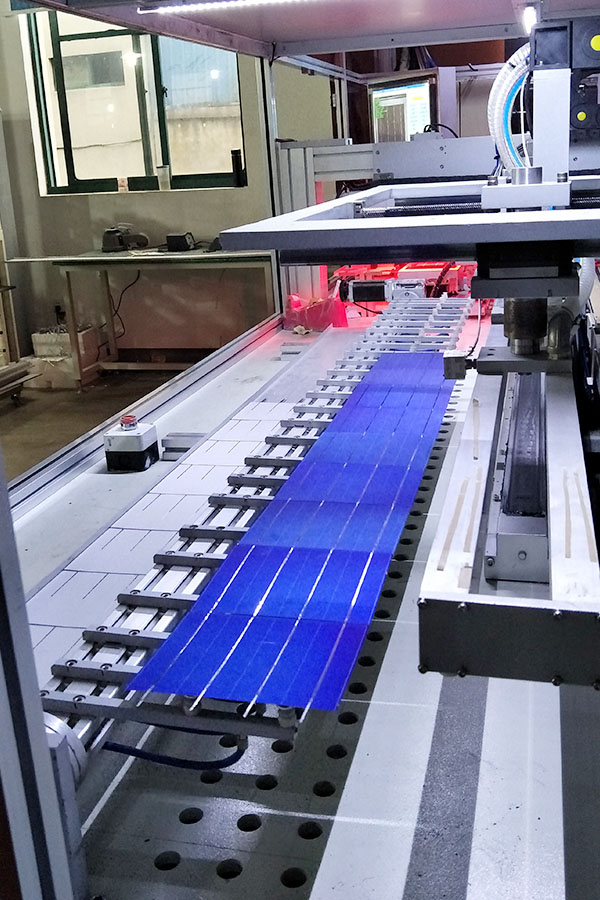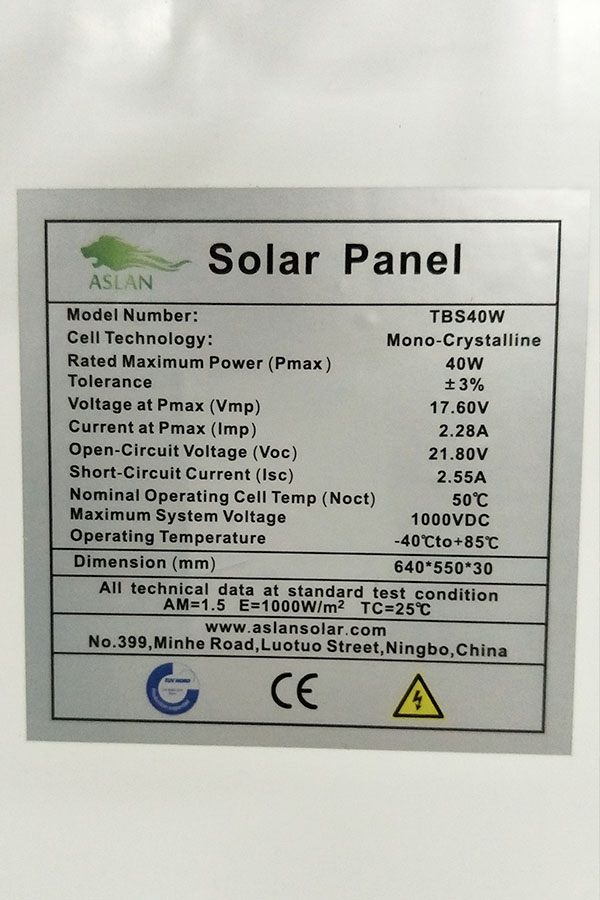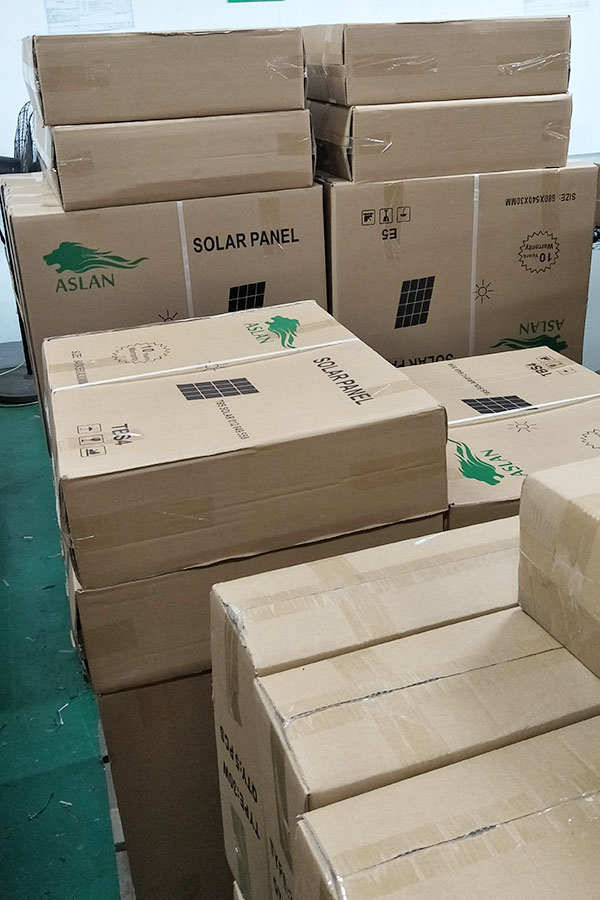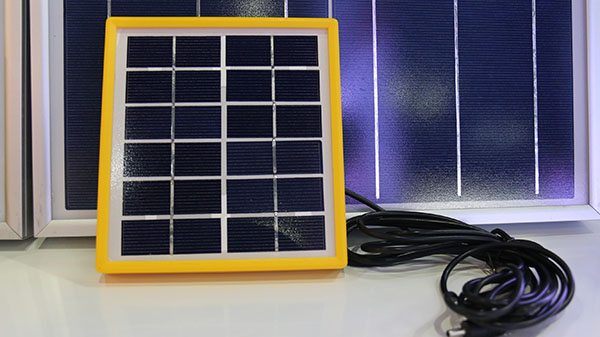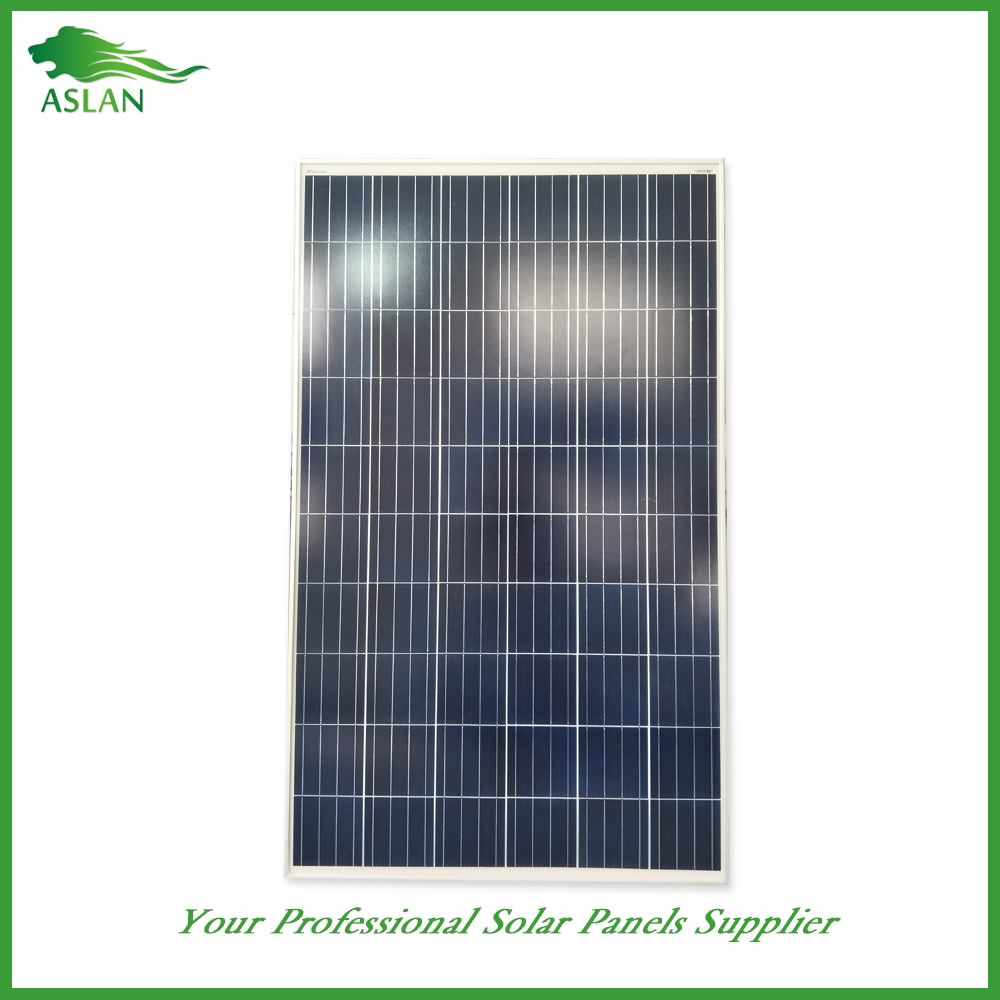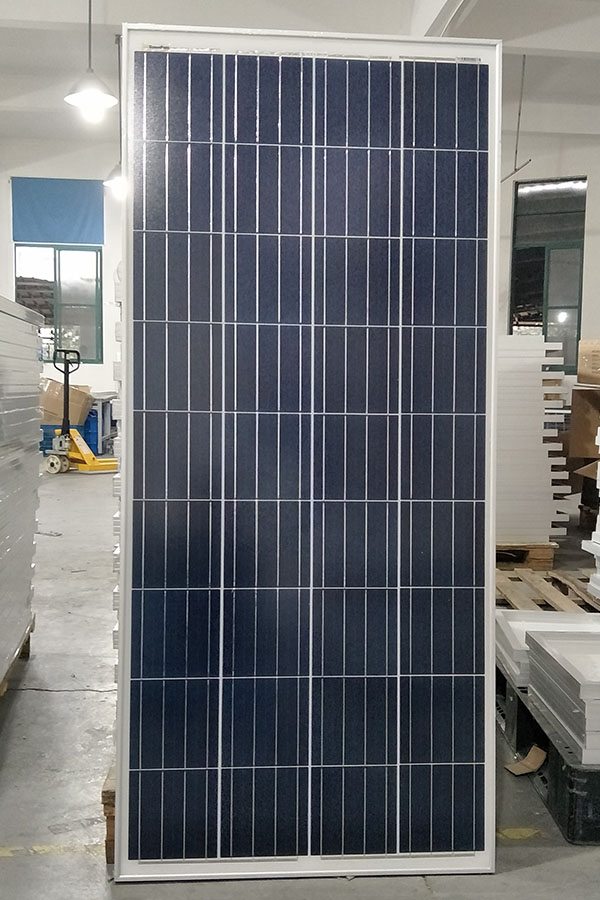Factory Cheap Hot Poly-crystalline Solar Panel 3W to Nicaragua
Short Description:
Our company promises all users of the first-class products and the most satisfying post-sale service. We warmly welcome our regular and new customers to join us for Factory Cheap Hot Poly-crystalline Solar Panel 3W to Nicaragua, We are looking forward to establishing long-term business relationships with you. Your comments and suggestions are highly appreciated.
Poly-crystalline Solar Panel 3W
Technical parameter
Maximum Power(W) 3W
Optimum Power Voltage(Vmp) 9V
Optimum Operating Current(Imp) 0.34A
Open Circuit Voltage(Voc) 10.8V
Short Circuit Current(Isc) 0.37A
Mechanical Characteristics
Cell Type Polycrystalline
No of Cell 18 (2x9pcs)
Dimensions 145x245x18mm
Weight 0.52KGS
Front Glass 3.2mm,High Transmission, Low Iron,Tempered Glass
Temperature and Coefficients
Operating Temperature(°C): -40°C ~ + 85°C
Maximum System Voltage: 600V(UL)/1000V(IEC) DC
Maximum Rated Current Series: 10A
Temperature Coefficients of Pmax: -0.435%
Temperature Coefficients of Voc: -0.35%
Temperature Coefficients of Isc: 0.043%
Nominal Operationg Cell Temperature (NOCT): 47+/-2°C
Materials of solar panel
1).Solar Cell——Polycrystalline solar cell 156*156mm
2).Front Glass——-3.2mm, high transmission, low iron, tempered glass
3).EVA——-excellent anti-aging EVA
4).TPT——-TPT hot seal made of flame resistance
5).Frame——anodized aluminum profile
6).Junction Box——-IP65 rated, high quality, with diode protection
Superiority: high quality anodized aluminum frame, high efficiency long life, easy installation, strong wind resistance, strong hail resistance.
Features
1. High cell efficiency with quality silicon materials for long term output stability
2. Strictly quality control ensure the stability and reliability, totally 23 QC procedures
3. High transmittance low iron tempered glass with enhanced stiffness and impact resistance
4. Both Poly-crystalline and Mono-crystalline
5. Excellent performance in harsh weather
6. Outstanding electrical performance under high temperature and low irradiance
Quality assurance testing
Thermal cycling test
Thermal shock test
Thermal/Freezing and high humidity cycling test
Electrical isolation test
Hail impact test
Mechanical, wind and twist loading test
Salt mist test
Light and water-exposure test
Moist carbon dioxide/sulphur dioxide
This informative webinar features SunWize Senior Engineer Rob Rallo, who has over 25 years experience designing off-grid solar, hybrid, and battery backup power systems.
This educational webinar will cover several topics related to PWM charge controllers, MPPT charge controllers, and 60-cell solar modules.
The first portion of the webinar will discuss voltage set points, temperature effects, and voltage losses between the array and solar charge controller. We will review appropriate calculations and best-practices related to these topics when designing off-grid solar systems.
The next portion of the presentation will cover appropriate design considerations for 60-cell (24V) solar modules when integrating into battery based systems. This section will include calculations for charge controller and battery bank voltages when using 60-cell modules.
Finally, we will discuss performance differences between PWM and MPPT charge controllers. When deciding what controller to use, it’s important to understand the limitations of each controller type, their advantages/disadvantages, different capabilities & features, as well as understanding the correct amount of power you can expect to produce with each type of controller under various conditions.
Make sure you are adequately sizing your system’s exact equipment & specifications with appropriate power output calculations, temperature effects, and line loss considerations!
http://www.sunnyincentives.com – Cost Of Solar Power
So what is the cost of solar power? Well obviously it depends on how much you spend! The average person spends between $19K to $27K on a solar power system. While that’s a lot of money, the good news is that with the right information you can drastically lower those numbers. There are two ways I learned about to cut the cost of solar power.
The first way you can lower the cost of solar power is to make sure you are benefiting from government incentives if you decide to purchase solar panels. There’s a way to go solar with out purchasing a costly system but I’ll get into that in a second. It can be really hard to find information on all the different incentives that take the form of tax credits, rebates, grants, etc. I must have spent several hours hunting online personally but eventually I discovered the easiest way to get it. After I decided to make a free report for people so they could save time too. With the report you will in minutes get access to all the incentives for your zip code. Doesn’t get any easier if you just follow the simple guide.
GET YOUR FREE GUIDE HERE: http://www.sunnyincentives.com
So the other way I started mentioning to cut the cost of solar power is to actually not buy solar panels at all! It’s called a solar power purchase agreement and basically you can get solar panels for free and just pay for the power that you use. The deal here is that you will agree to a lower rate than what you’re currently paying with your utility. It’s a pretty ingenious way to get instant gratification on the benefits of having solar panels with out spending all that money. I prefer this way but the choice is yours. Make sure you find out more before making a final decision.
Learn more in this video here: http://www.powerforpanels.com
As you can see the cost of solar power is basically relative and comes down to how exactly you choose to go solar and how much information you have at your finger tips about all the ways you can save money if you decide to invest in a solar panel system.
Additional resources about the cost of solar power:
What Is The Cost of Solar Panels & Solar Power? – SunRun
http://www.sunrun.com/solar-lease/cost-of-solar
Sunrun
Cost of Solar Panels & Solar Power for Your Home. On average the total cost of solar installation can be between $15,000 to $29,000 for average sized systems sized between 4kW and 8kW. 2. Sunrun solar lets you get started for as little as $0 down and helps you lower your electric bill.
Solar lease vs. buying solar – Solar Financing – New York
Cost of a Home Solar Power System – Wholesale Solar
http://www.wholesalesolar.com/solar-information/solar-cost?utm_expid=830826-2.W9O6TBRMRxGqta7Z1rW9tQ.0&utm_referrer=https%3A%2F%2Fwww.google.com%2F
Figuring out exactly how much your solar system will cost can take a little detective work. Electricity rates vary, and each state has different rebates that may affect the overall price of your system. The average system costs a little over $10,000.
Grid-Tied Battery Backup – Solar Incentives – Return on Investment for Solar …

